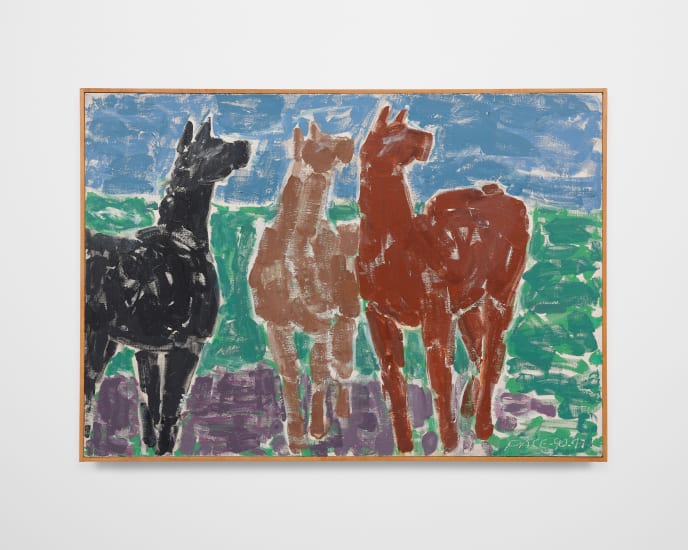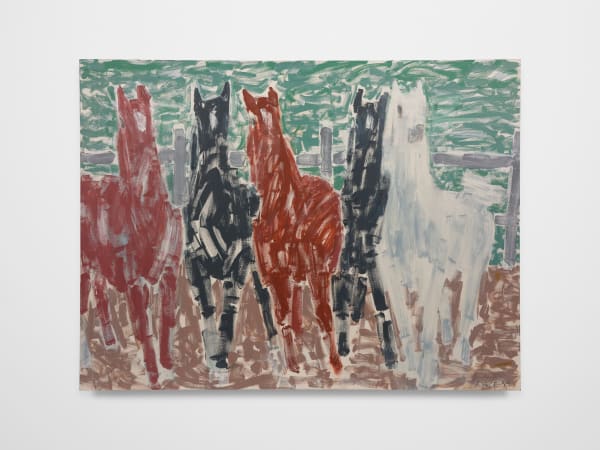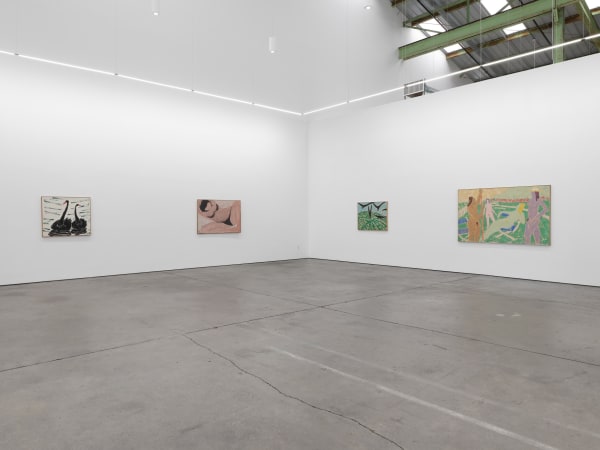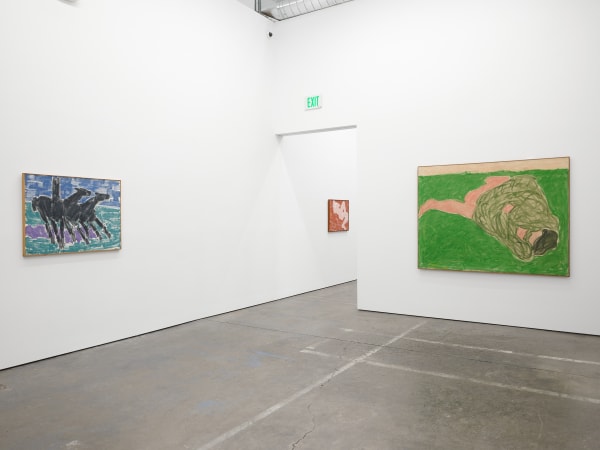Stephen Pace
Stephen Pace (1918-2010) brought a unique intensity to his depictions of rural life through his energetic brushwork and striking use of color. The seemingly effortless simplicity of his work has its foundations in abstract expressionism and minimalism, a style art historian Martica Sawin aptly termed “Minimal Figuration.”
Pace garnered early recognition from influential figures such as Gertrude Stein, Frank O’Hara, Hans Hoffman, Willem and Elaine de Kooning, Jackson Pollock, and Milton Avery. His passion for drawing was evident early on; Gertrude Stein first noticed him sketching along the Seine while he was stationed in Paris during World War II.
Between 1953 and 1961, Pace experienced considerable success as a prominent second-generation New York Abstract Expressionist, participating in important exhibitions at the Cleveland Museum of Art, The Whitney Museum of American Art, and the Stable Gallery in New York.
However, in 1962, Pace shifted his artistic direction, moving from abstraction towards representation. Inspired by his frequent visits to Maine, he developed a distinctive style that applied the same energy and bold color characteristic of his abstract pieces to still lifes and portraits. This became his primary mode of working for the next half-century.
-
 Stephen PaceUntitled (horses), 1999Oil on canvas72 x 96 in
Stephen PaceUntitled (horses), 1999Oil on canvas72 x 96 in
182.9 x 243.8 cm -
 Stephen PaceWild Horses #2 (96-11), 1996Oil on canvas24 1/2 x 30 1/2 in
Stephen PaceWild Horses #2 (96-11), 1996Oil on canvas24 1/2 x 30 1/2 in
62.2 x 77.5 cm -
 Stephen PaceMill River Ducks, 1993Oil on canvas42 x 60 in
Stephen PaceMill River Ducks, 1993Oil on canvas42 x 60 in
106.7 x 152.4 cm -
 Stephen PaceTwo Black Swans, 1982Oil on canvas34 x 38 in
Stephen PaceTwo Black Swans, 1982Oil on canvas34 x 38 in
86.4 x 96.5 cm -
 Stephen PaceGulls and Pier, 1978Oil on canvasFramed: 24 1/2 x 36 1/2 in
Stephen PaceGulls and Pier, 1978Oil on canvasFramed: 24 1/2 x 36 1/2 in
62.2 x 92.7 cm -
 Stephen PaceBettys Back Yard, 1968Oil on canvasFramed: 50 1/2 x 80 1/2 in
Stephen PaceBettys Back Yard, 1968Oil on canvasFramed: 50 1/2 x 80 1/2 in
128.3 x 204.5 cm -
 Stephen PaceCherry Pickers #2, 1966Oil on canvas32 x 42 in
Stephen PaceCherry Pickers #2, 1966Oil on canvas32 x 42 in
81.3 x 106.7 cm -
 Stephen PaceMarch Sunning, 1964Oil on canvas22 x 34 in
Stephen PaceMarch Sunning, 1964Oil on canvas22 x 34 in
55.9 x 86.4 cm -
 Stephen PaceSun Worshipper, 63-12, 1963Oil on canvas55 1/2 x 72 1/2 in
Stephen PaceSun Worshipper, 63-12, 1963Oil on canvas55 1/2 x 72 1/2 in
141 x 184.2 cm












